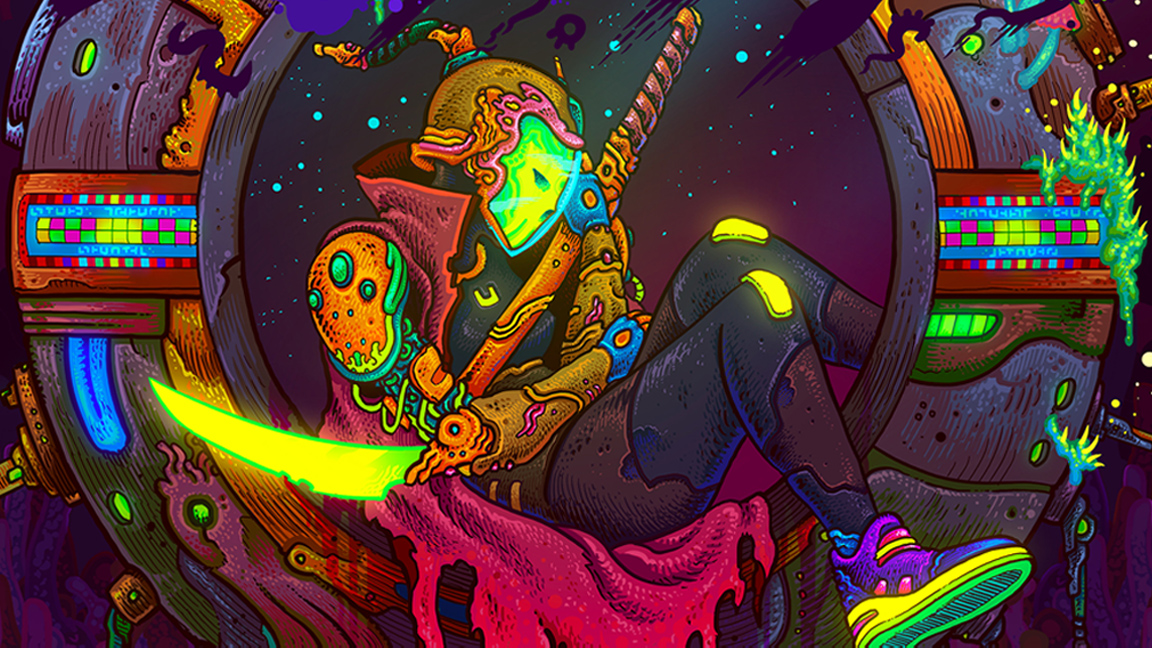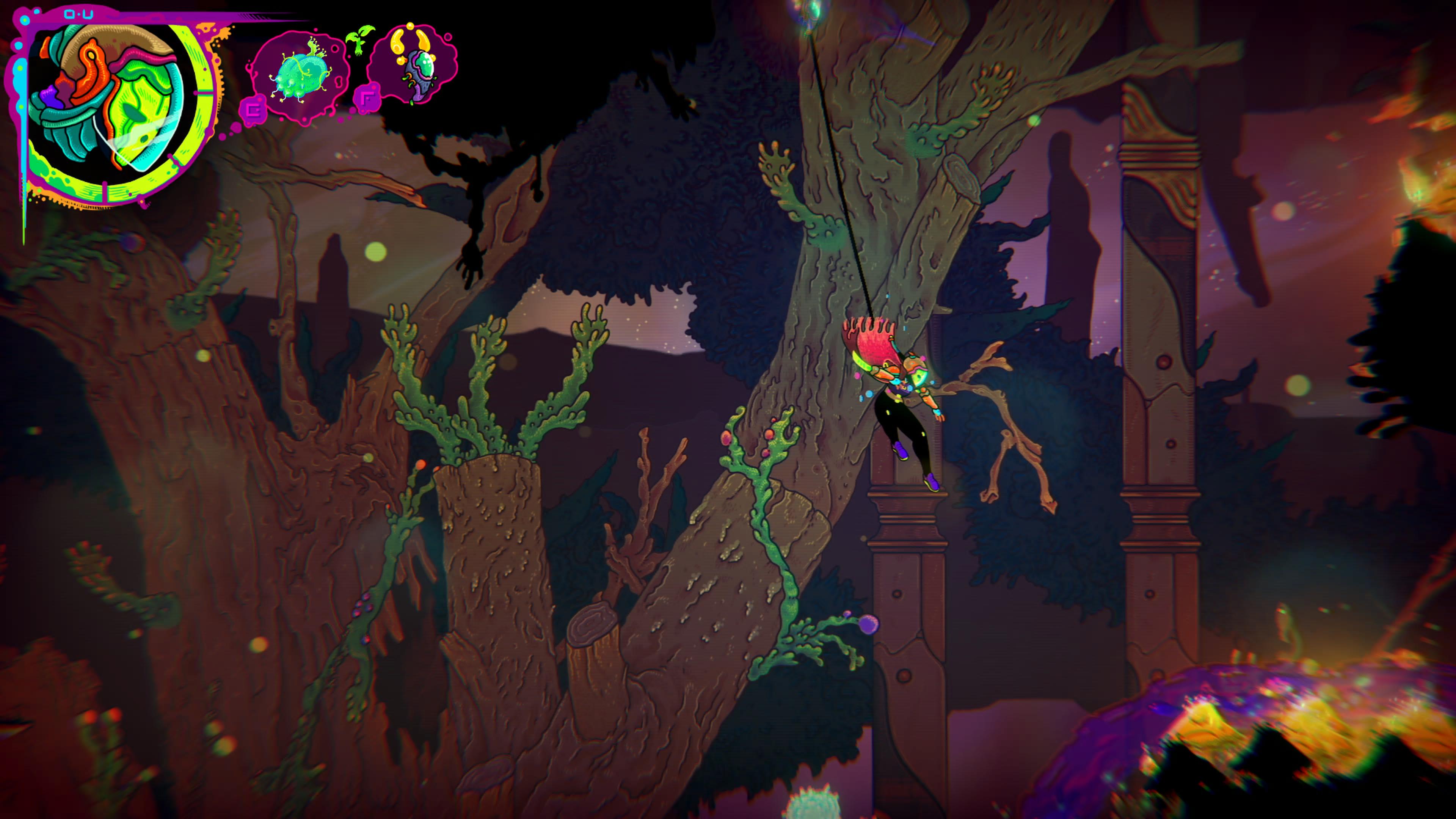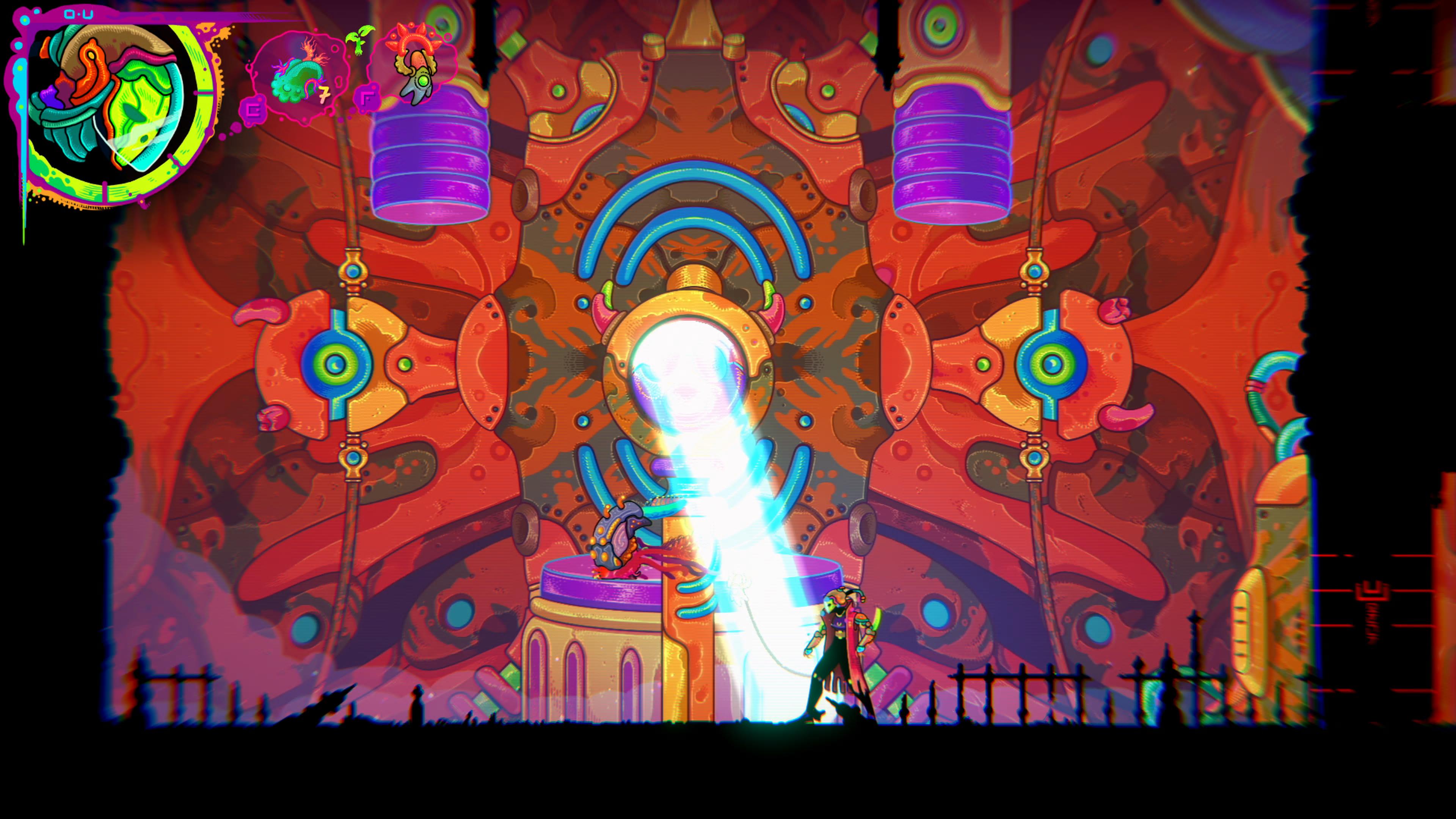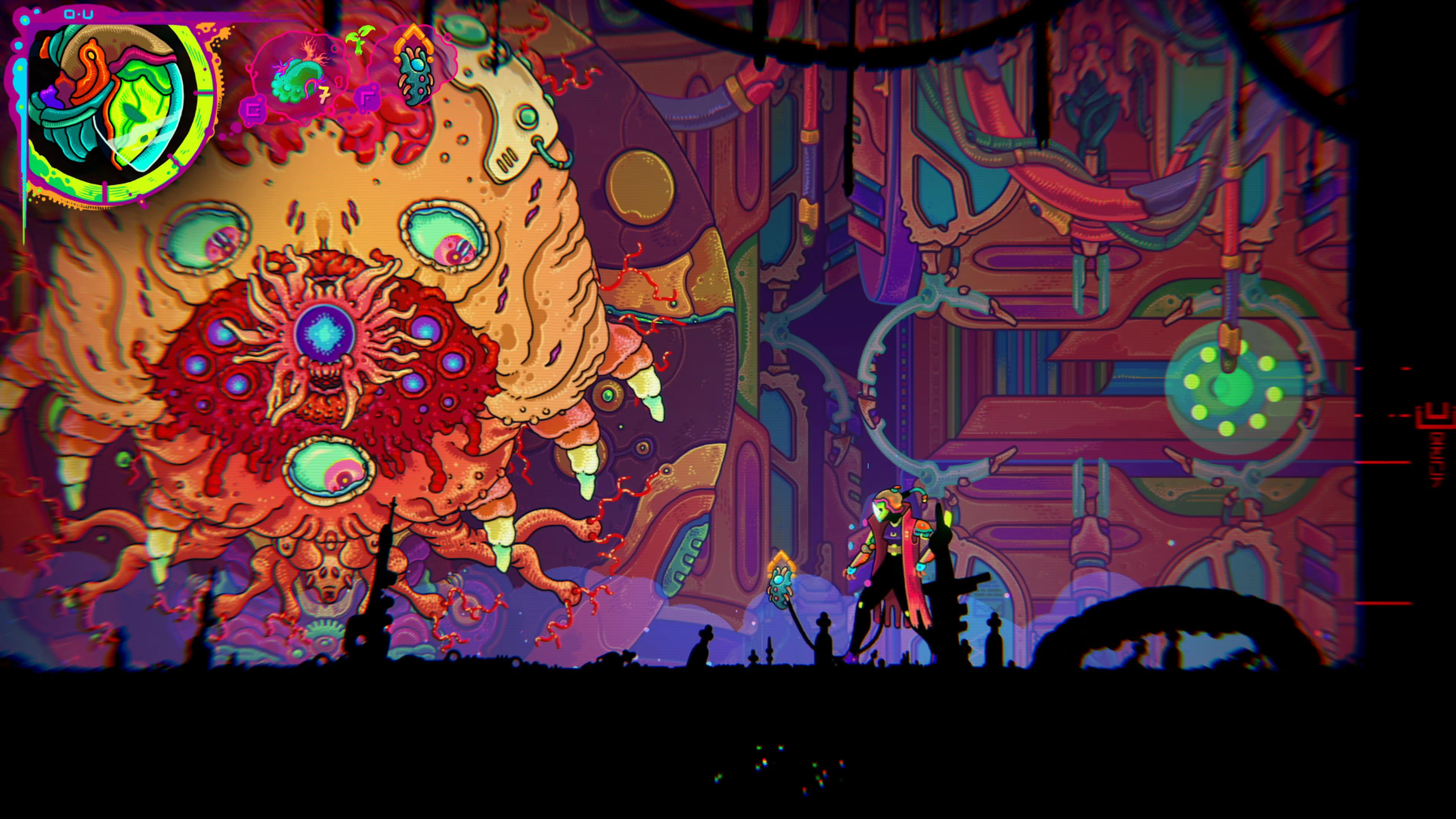

Publisher Hadoque
Developer Kepler Interactive
Platform PS5 (reviewed), PS4 Xbox Series X / S, PC, Mac
Release Out now
Price $29.99 / £29.99 ($39.99 / £34.99 Deluxe)
Ultros is a game defined by a love of art and a desire to craft a meditative Metroidvania experience where others seek simple violence. In many ways playing Ultros feels indescribable; it’s purposefully confusing, complex and thoroughly alien and when you feel as lost as the game wants you to be, that visual style keeps you hooked.
The psychedelic look of Ultros has been created by artist Niklas ‘El Huervo’ Åkerblad, who previously worked on indie hit Hotline Miami, and is a drip feed of inspirations from the thick ink outlines and complex hatching of Moebius to colour palette that recalls 1990s Saturday morning cartoons, with just a touch of The Grateful Dead’s poster surrealism.
The strength of the art direction supports the themes of the game’s design. You wake on a drifting space station at the edge of a black hole, not knowing why you’re there or what you need to do. The station, The Sarcophagus, is a maze of corridors, a labyrinth of spaces that nature, alien flora and fauna, has overtaken.
Ultros review: art enables game design

Initially I just feel lost and push on, playing as I would any other Metroidvania, finding a weapon, upgrading skills and learning new ways to unlock doors that take me further into The Sarcophagus. Then it all changes, and I’m back waking again and need to repeat my footsteps - Ultros is a Metroidvania with a roguelike structure and it works really well.
Unlike other games of this ilk you’re not just upgrading and growing your character’s skills, but tasked with changing the nature of the environments too, in order to get deeper into the station. The goal? To kill seven guardians keeping a god asleep, or is it? The purpose of your exploration is maluable.
The core of the Ultros loop is found in planting seeds to grow trees and foliage, which in turn can lead to or open new rooms. When the loop restarts these plants grow and change, they get bigger, enabling further exploration. Rinse and repeat.

Experimentation is crucial, both when and what seeds you plant and even what you feed the soil; a late game addition to your gadgets enables plants to be spliced together to create new variants. It’s more complex than most Metroidvania adventures, such as Blasphemous 2, and The Sarcophagus is a huge space to explore, taking many loops to unlock. At times you can feel lost, both contextually within its walls and emotionally as the alien-ness of the game, one that rarely explains itself, draws closer.
There’s always a moment in a Metroidvania when you lose hope, when you’ve trodden the same corridors again and again with little progress, but when that happens in Ultros the world El Huervo has crafted keeps me engaged, teases a new kaleidoscopic room or a trippy creature design, and I keep going. The art anchors the experience, even at its most alien.

Combat is less effective, despite a nice risk and reward system that feeds into the space-gardening idea. A simple melee combo system exists, which even includes a smart juggling setup to fling creatures about the screen, and the more creative you are with your attacks the better ‘debris’ aliens drop. This can be used to replenish energy but also feed to soil to improve plant growth. It’s a nice setup but combat lacks the depth of a game like Prince of Persia: The Lost Crown, and all too soon you will have found its limits.
Likewise boss fights lack the depth or even the invention of the game's art style; after a few brief seconds you'll figure out the tactics to topple the latest tentacled beast and progress. While the game could do more here, ultimately the goal of Ultros isn't to kill everything you find in your way, but often to harmonise the world to avoid a fight.
Ultros is a complex, innovative and rewarding game that distances itself from the genre with a unique and complex simulation of alien plant life. Even when I'm unsure as to why and what is happening, the simple act of experimenting with the game’s systems, growing otherworldly plant life and absorbing more of the art is enough to keep me hooked.







